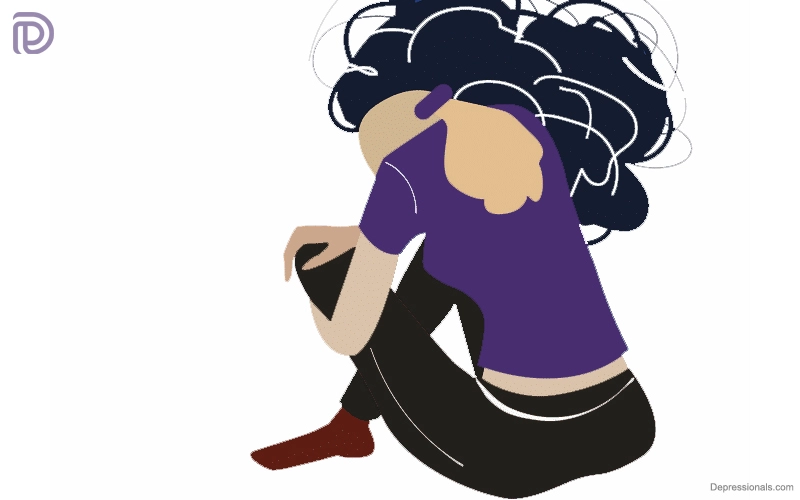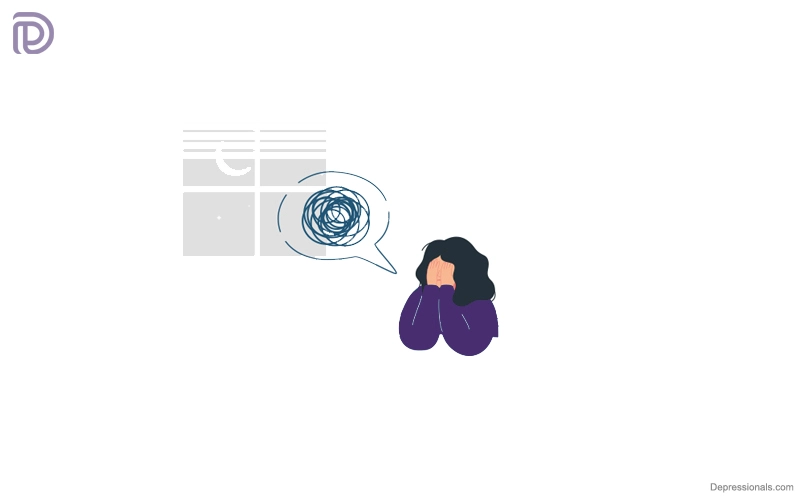Dissociative identity disorder (formerly known as multiple personality disorder) is believed to be a complicated psychiatric disease caused by a variety of circumstances, including severe childhood trauma (usually extreme, repetitive physical, sexual or emotional abuse)
What is dissociative identity disorder?
Dissociative identity disorder (DID) is a severe type of dissociation, a mental process in which a person’s ideas, memories, emotions, behaviors, or sense of identity are disconnected. Dissociative identity disorder is believed to be caused by a mix of circumstances, including the trauma that the individual with the condition has undergone.
The dissociative component is believed to be a coping strategy in which a person physically disconnects or dissociates from a situation or experience that is too violent, traumatic or unpleasant for them to process with their conscious self.
Read: Body Integrity Identity Disorder
Causes of dissociative identity disorder
DID is thought to be caused by a psychological reaction to interpersonal and environmental stressors, especially during early infancy, when emotional neglect or abuse may disrupt personality development. Many people who acquire dissociative disorders have personal histories of recurrent, overwhelming and sometimes life-threatening disturbances or traumas that occurred during a critical developmental period of infancy (usually before age 6).
Even if there has been no overt physical or sexual abuse, dissociation may occur as a result of chronic neglect or emotional abuse. According to the findings, children may develop dissociative in homes where their parents are scary and unpredictable. According to studies, DID affects approximately 1% of the population.
Dissociative identity disorder symptoms
Dissociative identity disorder is defined by the existence of two or more separate or split identities or personality states that have constant control over a person’s behavior. There’s also an inability to remember crucial personal information in dissociative identity disorder that’s too extensive to be explained by simple forgetfulness. There are also extremely unique memory variants that may vary with a dissociative identity disorder.
Although not everyone has the same experience with DID, some “alters” or distinct personalities have their own age, gender, or race. Each has its unique set of postures, gestures, and speech patterns. The alters are sometimes made-up humans, and other times they are animals.
The process of each personality revealing itself and controlling an individual’s actions and ideas is referred to as “switching.” Switching may take anything from a few seconds to many days. Some people seek therapy via hypnosis, in which the person’s many “alters” or personalities are more receptive to the therapist’s commands.
The following signs and symptoms may occur depending on the kind of dissociative disorder you have:
- Memory loss (amnesia) of specific time periods, episodes, persons and personal data
- A feeling of being cut off from yourself and your emotions
- A skewed and surreal view of the people and things around you
- A distorted sense of self
- Significant difficulties or stress in your relationships, job or other key aspects of your life
- Inability to handle emotional or professional stress effectively
- Mental disorders, such as depression, anxiety, and suicidal thoughts and actions
The Diagnostic and Statistical Manual of Mental Disorders (DSM-5) issued by the American Psychiatric Association defines three main dissociative disorders.
Read: Mixed Dementia
Psychiatric association
Dissociative amnesia: The primary symptom is significant memory loss that isn’t caused by a medical issue. You can’t remember details about yourself, events, or people in your life, particularly if it happened during a stressful period. Dissociative amnesia may be confined to events in a particular time frame, such as severe fighting, or it can be more uncommon total memory loss. It may sometimes include travel or a disoriented wandering away from your life (dissociative fugue). Amnesia typically strikes abruptly and lasts minutes, hours, or, in rare cases, months or years.
Dissociative identity disorder: This condition, formerly known as multiple personality disorder, is marked by the “switching” of identities. You may sense the presence of two or more individuals speaking or living within your mind, as well as the feeling of being possessed by other personalities. Each identity may have its name, personal history, and features, such as evident voice, gender, mannerisms, and even physical characteristics such as the necessity for spectacles. There are also variations in how one identity is acquainted with the others. Dissociative identity disorder is often accompanied by dissociative amnesia and dissociative fugue.
Depersonalization-derealization disorder: This is characterized by a continuous or episodic sensation of detachment or being outside of oneself as if watching a movie and witnessing your actions, emotions, ideas and self from afar (depersonalization). Other people and objects around you may seem distant, hazy, or dreamy; time may appear to be slowed or sped up; the environment may appear surreal (derealization). Depersonalization, derealization or both may occur. Symptoms, which may be very unpleasant, might last just a few minutes or continue for years.
Read: Vascular Dementia
How is dissociative identity disorder diagnosed?
It takes time to diagnose dissociative identity disorder. Individuals with dissociative disorders are estimated to have spent seven years in the mental health system before receiving an accurate diagnosis.
Dissociative disorders share a lot of symptoms with many other illnesses, making the list of symptoms that cause one to seek treatment for dissociative disorders very similar. Many individuals with dissociative disorders also have additional diagnoses such as borderline or other personality disorders, depression or anxiety.
The following criteria are included in the DSM-5 for diagnosing dissociative identity disorder:
- There are two or more different personalities or personality states present, each with its own generally stable way of seeing, responding to, and thinking about the world and oneself.
- Amnesia must occur, which is described as gaps in memory of daily occurrences, essential personal information, and/or catastrophic experiences.
- The individual must be bothered by the condition and have difficulty functioning in one or more key life areas as a result of it.
- The disruption is not associated with regular religious or cultural activities.
- The symptoms cannot be caused by the substance’s direct physiological effects (such as blackouts or erratic behavior while intoxicated) or a medical problem (such as complex partial seizures).
The many personalities may play different roles in assisting the individual in coping with life’s challenges. When a patient is first diagnosed, for example, there are usually two to four personalities present.
After then, there is an average of 13 to 15 personalities who emerge throughout therapy. A rapid change from one alter or personality to another is caused by environmental stimuli or life experiences.
Read: Frontotemporal Dementia
What other psychiatric disorders could DID cause?
People with dissociative disorders may experience a variety of psychiatric symptoms in addition to dissociation and multiple or split personalities, such as:
- Depression
- Mood swings
- Suicidal tendencies
- Sleep disorders (insomnia, sleepwalking and night terrors)
- Anxiety, panic attacks and phobias are all symptoms of anxiety (flashbacks, reactions to stimuli or “triggers”)
- Alcohol and drug abuse
- Rituals and compulsions
- Symptoms of psychotic (including auditory and visual hallucinations)
- Eating disorders
Dissociative identity disorder treatment
There are no official, evidence-based guidelines for treating DID at this time. Many therapies are based on case studies or are at best debatable.
While there is no “cure” for dissociative identity disorder, long-term therapy, if the patient remains dedicated, may be beneficial. The following are examples of effective treatment:
- Psychotherapy, often known as talk therapy, is a kind of treatment that aims to address whatever caused and continues to trigger DID. The aim is to “fuse” the many personality characteristics into a unified personality capable of controlling the triggers. Family members are often included in this kind of treatment.
- Hypnotherapy. Clinical hypnosis may be used in combination with psychotherapy to assist access repressed memories, regulate some of the troublesome behaviors associated with DID, and merge the personalities into one.
- Adjunctive therapy is a kind of treatment that is used in conjunction with other treatments Art and dance therapy, for example, have been proven to assist individuals in reconnecting with areas of their minds that they have turned down in order to deal with trauma.
Because there are no well-established pharmaceutical therapies for dissociative identity disorder, psychotherapy is the cornerstone of treatment. Treatment for co-occurring illnesses including depression and drug abuse disorders is critical to overall recovery.
Because the symptoms of dissociative disorders often coexist with other illnesses, such as anxiety and depression, medications to address such co-occurring issues are sometimes utilized in addition to psychotherapy.
Read: Lewy Body Dementia
Is hypnosis helpful for DID?
Hypnotherapy may be recommended in combination with psychotherapy by some healthcare providers. Guided meditation is a form of hypnotherapy. The process may help people recover memories that were suppressed.
Prevention
DID cannot be prevented. It is important to identify symptoms as early as possible and seek treatment if you want to manage them. Children should be watched for signs by their parents, caregivers, and teachers. DID can be prevented from progressing if treated soon after abuse or trauma.
In addition to identifying triggers, treatment can also aid in identifying changes in identity or personality caused by those triggers. Stress and substance abuse are common triggers. It may be possible to reduce the frequency of different alters controlling your behavior if you manage stress and avoid drugs and alcohol.
When should you visit doctor?
Traumatic flashbacks that are overpowering or linked with hazardous conduct are common in individuals with dissociative disorders who appear in a crisis. People who exhibit these symptoms should go to the emergency department.
Call your doctor if you or a loved one is experiencing non-urgent symptoms that may suggest a dissociative condition.





I would like to thnkx for the efforts you have put in writing this blog. I am hoping the same high-grade blog post from you in the upcoming as well. In fact your creative writing abilities has inspired me to get my own blog now. Really the blogging is spreading its wings quickly. Your write up is a good example of it.
Hello! I know this is kinda off topic however, I’d figured I’d ask. Would you be interested in exchanging links or maybe guest authoring a blog article or vice-versa? My website covers a lot of the same subjects as yours and I feel we could greatly benefit from each other. If you are interested feel free to shoot me an email. I look forward to hearing from you! Wonderful blog by the way!
Not a unhealthy post, did it take you numerous of your time to think about it?